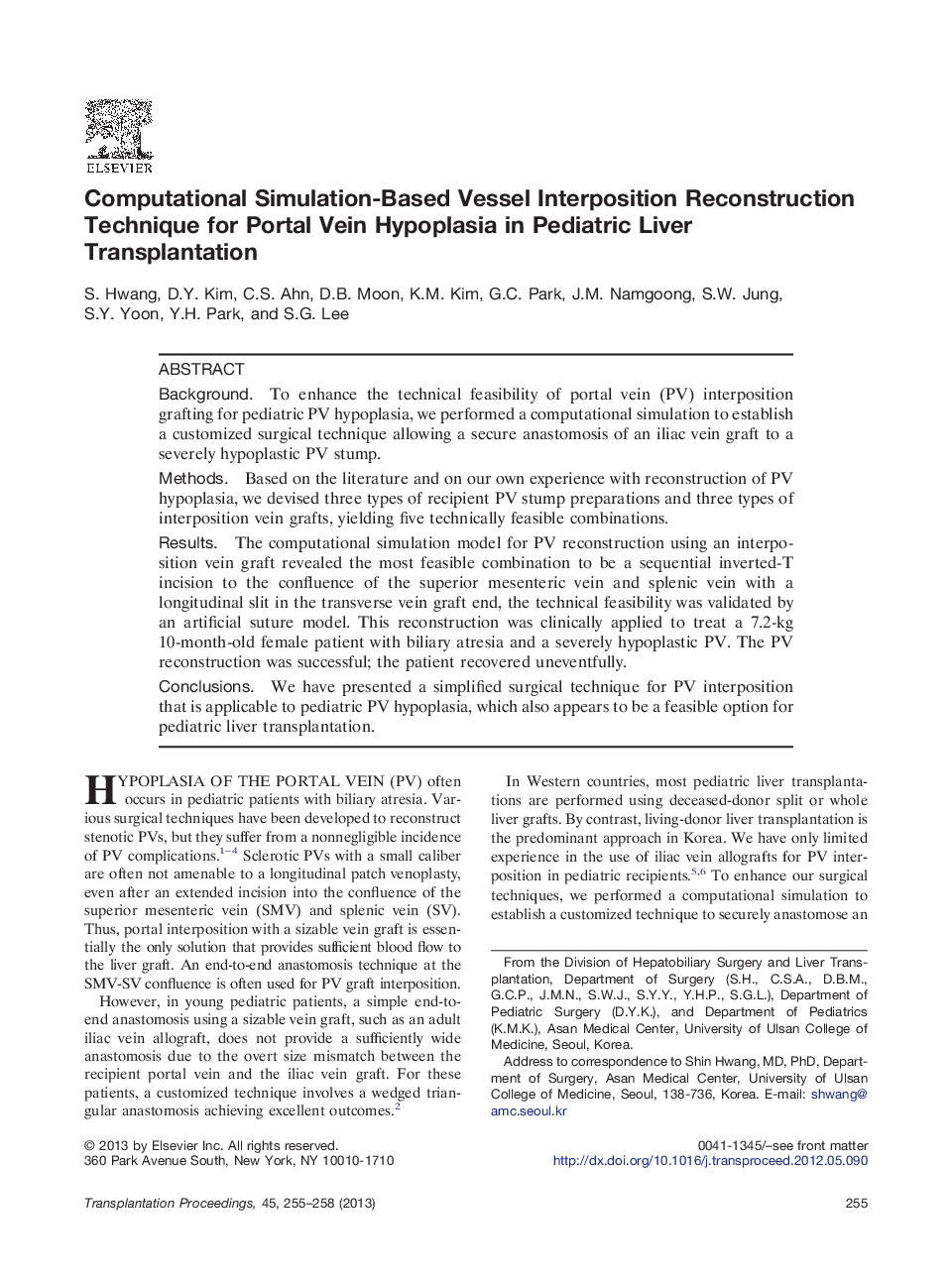| Article ID | Journal | Published Year | Pages | File Type |
|---|---|---|---|---|
| 4257102 | Transplantation Proceedings | 2013 | 4 Pages |
BackgroundTo enhance the technical feasibility of portal vein (PV) interposition grafting for pediatric PV hypoplasia, we performed a computational simulation to establish a customized surgical technique allowing a secure anastomosis of an iliac vein graft to a severely hypoplastic PV stump.MethodsBased on the literature and on our own experience with reconstruction of PV hypoplasia, we devised three types of recipient PV stump preparations and three types of interposition vein grafts, yielding five technically feasible combinations.ResultsThe computational simulation model for PV reconstruction using an interposition vein graft revealed the most feasible combination to be a sequential inverted-T incision to the confluence of the superior mesenteric vein and splenic vein with a longitudinal slit in the transverse vein graft end, the technical feasibility was validated by an artificial suture model. This reconstruction was clinically applied to treat a 7.2-kg 10-month-old female patient with biliary atresia and a severely hypoplastic PV. The PV reconstruction was successful; the patient recovered uneventfully.ConclusionsWe have presented a simplified surgical technique for PV interposition that is applicable to pediatric PV hypoplasia, which also appears to be a feasible option for pediatric liver transplantation.
